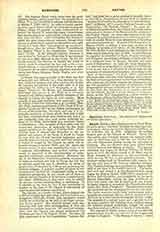

Exeter (EXONIA, ISCA DAMNONIORUM, CAER WISE, EXANCEASTER), Ancient Diocese of (EXONIENSIS), in England, chosen by Leofric, Bishop of Crediton, as his cathedral city in 1050. Originally Devonshire formed part of the Diocese of Wessex. About 703 Devonshire and Cornwall became the separate Bishopric of Sherborne and in 900 this was divided into two, the Devonshire bishop having his cathedral at Crediton. The two dioceses were again united when Leofric became first Bishop of Exeter. The present cathedral was begun by Bishop William de Warelhurst in 1112; the abbey church of St. Mary and St. Peter, founded by Athelstan in 932 and rebuilt in 1019, serving till then as the cathedral church. The transept towers built by Warelhurst still remain, being the only part of the Norman cathedral existing. This Norman building was completed by Bishop Marshall at the close of the twelfth century. The cathedral as it now stands is in the decorated style, being begun by Bishop Quivil (1280-1291), continued by Bytton and Stapeldon, and completed by the great Bishop Phandisson during his long pontificate of forty-two years, who left it much as it now stands. In many respects it resembles the French cathedrals rather than those of England. The special features of the cathedral are the transeptal towers and the choir. The latter contains much early stained-glass and a magnificent episcopal throne, and is separated from the nave by a choir-screen of singular beauty (1324). The absence of a central tower and a general lack of elevation prevent the building from ranking among the greatest English cathedrals, though the stately west front is alone sufficient to render it remarkable.
The bishops of Exeter always enjoyed considerable independence and the see was one of the largest and richest in England, “The Bishop of Exeter,” writes Professor Freeman, “like the Archbishop of York was the spiritual head of a separate people.” The remoteness of the see from London prevented it from being bestowed on statesmen or courtiers, so that the roll of bishops is more distinguished for scholars and administrators than for men who played a large part in national affairs. This was fortunate for the diocese and gave it a long line of excellent bishops, one of whom, Edmund Lacy, died with a reputation for sanctity and the working of miracles (1455). The result of this was seen in the fidelity with which Devonshire and Cornwall adhered to the Catholic Faith at the time of the Reformation. The following are the bishops with the dates of their accession:
Leofric, 1046 James Berkeley, 1326
Osbern, 1072 John Grandisson, 1327
William Warelwast, 1107 Thomas Brantyngham, 1370
Robert Chichester, 1138 Edmund Stafford, 1395
Robert Warelwast, 1155 John Ketterick, 1419
Bartholomew Iscanus, 1161 Edmund Lacy, 1420
John the Chaunter, 1186 George Neville, 1458
Vacancy, 1191, John Bothe, 1465
Henry Marshall, 1194, Peter Courtenay, 1478
Vacancy, 1206 Richard Fox, 1487
Simon de Apulia, 1214 Oliver King, 1492
William Bruere, 1224 Richard Redman, 1496
Richard Blondy, 1245 John Arundell, 1502
Walter Bronescombe, 1257 Hugh Oldham, 1504
Peter Quivil, 1280 John Vesey, 1519
Thomas de Bytton, 1292 Vacancy, 1551
Walter de Stapleton, 1308 James Turberville, 1555-1559
The diocese, originally very wealthy, was plundered during the reign of Henry VIII, when Bishop Vesey was forced to surrender fourteen out of twenty-two manors, and the value of the bishopric was reduced to a third. Vesey, though a Catholic at heart, held the see until 1551, when he was made to resign, and the Reformer, Miles Coverdale, was intruded into the see, where he made himself most unpopular. On the accession of Mary, in 1553, Vesey was restored. He died in 1554 and was succeeded by James Turberville, beloved by Catholics and Protestants alike. He was deprived of the see by Elizabeth in 1559 and died in prison, probably in or about 1570, the last Catholic Bishop of Exeter. The diocese contained four archdeaconries, Cornwall, Barnstaple, Exeter, and Totton, and six hundred and four parishes. There were Benedictine, Augustinian, Franciscan, Dominican, and Norbertine houses, and four Cistercian abbeys. The cathedral was dedicated to St. Peter, and the arms of the see were: Gules, a sword in pale blade and hilt proper, two keys in saltire or.
EDWIN BURTON

